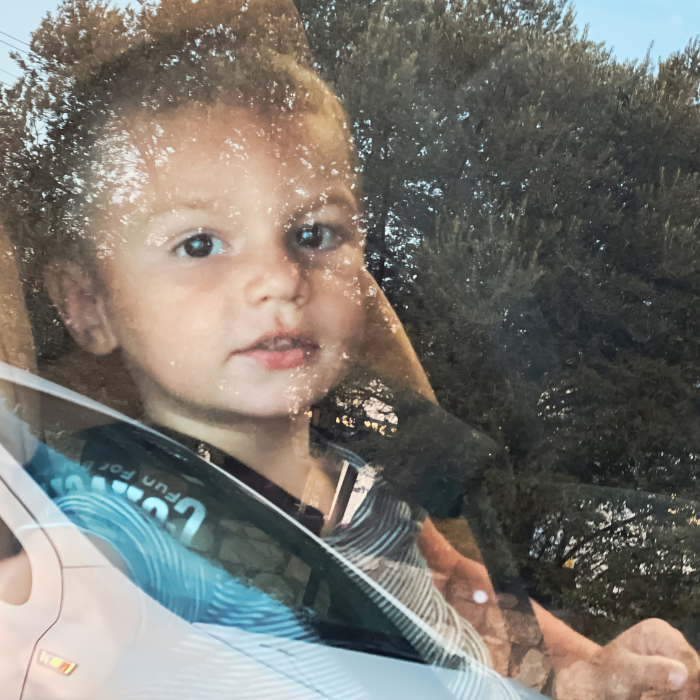
Did you know that your child needs two hours of outdoor play each day to help ensure their eyes are healthy and reduce Myopia? Katherine Granich explains.
As we come out of winter, blinking into the sunlight like animals just emerging from hibernation, we may be revelling in the opportunity to be out-of-doors in warmer, sunnier weather. Winter does no favours to our mental health, with its shorter sunlight hours and colder climate. Kids spend an inordinate amount of time inside on screens, and springtime is a good reminder to get outside and get some fresh air and natural light.
Kids playing outside in the sunshine isn’t just about getting them off screens and out of their parents’ hair. There’s ample evidence that exposure to sunshine can actually help support healthy vision, in particular reduce their chances of developing myopia and lowering the risk of myopia getting worse, if they do have it.
WHAT IS MYOPIA?
Myopia, also known as nearsightedness or shortsightedness, is a common vision disorder that is usually diagnosed in childhood. People with myopia can usually see nearby objects well, but have difficulty focusing on objects that are in the distance – they may appear blurry.
WHAT CAUSES MYOPIA?
According to the Ministry of Health, “Short-sightedness is caused by your eyeball being too long or your cornea (the transparent layer that covers the front of your eye) being too curved. The focus point is in front of your retina, the light-sensitive part of your eye, rather than directly on your retina, causing blurred distance vision.” Because your eye grows throughout childhood, children and adolescents generally develop myopia – it’s not often diagnosed as a new condition in adults.
HOW COMMON IS MYOPIA?
Myopia is estimated to affect 1.5 billion people worldwide, which is about 22% of the world’s population, but rates vary significantly in different parts of the world. New Zealand-specific statistics aren’t available, but in Australia, North America, and Europe, 25-50% of children are myopic, and it is estimated that by 2050, over 50% of the world’s population is expected to have myopia. In Australia, 30% of 17-year-olds are myopic, and the percentage of Australian 12-year-olds with myopia doubled between 2005 and 2011. So it’s fair to say that unfortunately, myopia is on the rise.
HOW DOES MYOPIA GET DIAGNOSED?
Your child might complain about not being able to see things far away, or may squint or act as though they can’t see their teacher at the front of the room, things written on the whiteboard, or someone waving to them across the playground. They might rub their eyes or complain of sore eyes or headaches. In New Zealand, your child’s eyesight will be screened at their B4 School Check at age four to five, then again in Year 7 when they are 11-12 years old. However, these free vision checks don’t pick up everything, and if you are concerned about your child’s eye health or vision, you’ll need to make (and pay for) an appointment with an optometrist or ophthalmologist. A good place to start is at a local eyeglass store – give them a call to ask if they do children’s vision checks.
WHAT CAN BE DONE ABOUT MYOPIA?
Glasses, contact lenses, and laser eye surgery can all help to correct myopic vision. However, they don’t address the underlying cause – the elongation of the eyeball, which puts you at risk for other damaging eye conditions and impairments. Once myopia starts, there’s no way to stop its progression (yet – there are some new scientific and medical advances in this space, but they are extremely expensive and not currently easily accessible in New Zealand). So it’s important to try to prevent myopia – that elongated eyeball – from happening in the first place. This is where sunlight and being out-of-doors comes in, and why it’s critical for children to spend time playing in the sunshine.
HOW SUNSHINE HELPS CHILDREN’S EYE HEALTH
The eyes need natural light to help develop properly, and the more time children spend in artificial or dim indoor light on their screens or doing close-up activities like reading or playing with devices, the less natural light their eyes will be getting. According to the American Optometric Association, “If a child does not have enough dopamine due to sitting inside, then the eye can get longer and longer, and the longer the eye, the more severe the myopia.”
A 2018 article in the New Zealand Medical Journal states, “Several studies have shown that school-based interventions aimed at increasing outdoor time reduced the onset and progression of myopia. Encouraging children to increase their outdoor time to approximately two hours per day is likely to have a positing impact on limiting myopia development in a population, as well as being beneficial for reducing other health problems like childhood obesity. This can be done with appropriate sun protection or undertaken earlier or later in the day.”
HOW CAN I ENCOURAGE MY CHILD TO GET OUTSIDE?
Between video games, watching screens, doing homework on the computer, staring at phones, and social media, kids are spending more time than ever on screens and indoors. Here are some ways you can help encourage your children to get outside:
- Walk to and from school, or park further away from school at drop-off and pick-up time so you are outside of the car for longer.
- Eat meals out-of-doors on sunny days – alfresco breakfast is great fun for kids, as well as picnic dinners in the local park (or even just in your garden at home).
- Go to outdoor performances and shows, like cultural festivals, food markets, plays, concerts, or “have a go” sports days.
- Take family walks together, and visit all the local playgrounds or bike tracks for outdoor playtime.
- Go on nature hunts, such as finding a certain number of coloured leaves or flowers, fossick for shells at the beach, or even take part in geocaching, painted rock hunts, and the New Zealand Garden Bird Survey. You’ll find lots of ideas online for doing treasure hunts outdoors.
- Put on gumboots and go puddle jumping when the sun comes out after a rainstorm.
- Incorporate outdoor activities in family holidays, such as mini golf, fish and chips on the beach, checking out the local outdoor play areas, family tramps, or camping.
- If you’re trying to wean your child off technology, get them to bring along their camera to photograph things they see in nature, or their internet-connected phone to look up birds they see – it’s about integration rather than going cold-turkey.
- Take a blanket to the park and lay around looking at clouds, describing the shapes you see there.
- Gardening is a wonderful way to regularly be outside, as plants and fruits and vegetables need regular attention every day.








